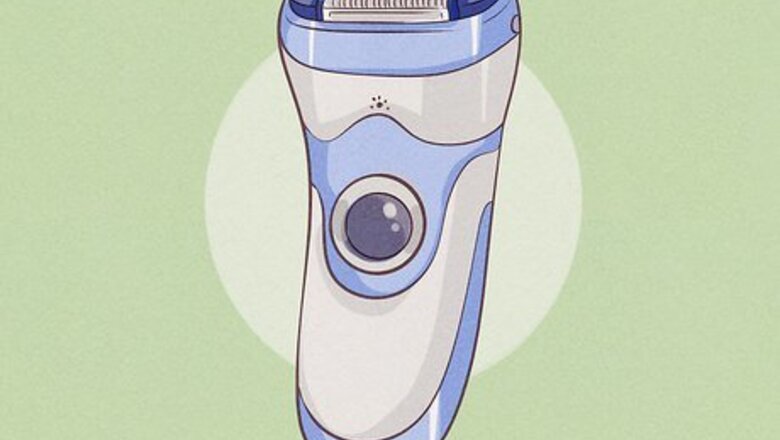
views
Using an Epilator on Your Sideburns
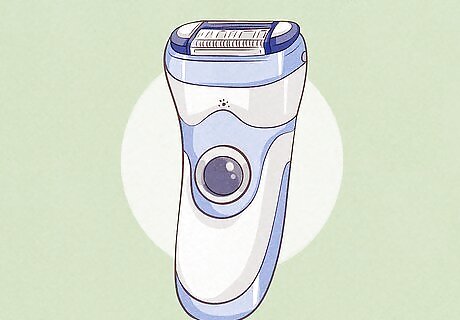
Purchase an epilator. An epilator has multiple, mechanical arms that will tweeze many hairs out all at once. It can be quite painful, but it is effective. Be sure to choose 1 designed for removing facial hair. Facial epilators are a little smaller than the ones designed for body hair removal, but their size makes them more precise so you will have more control as you remove your hair. An epilator is ideal if you can stand some discomfort and want quick, long-lasting results. Some epilators can be used in the shower, and wet, softened hair is a little easier to remove, which can reduce the pain. If you are concerned about the pain, take an over the counter pain killer before using the epilator. Alternatively, you can use a clipper or a razor.
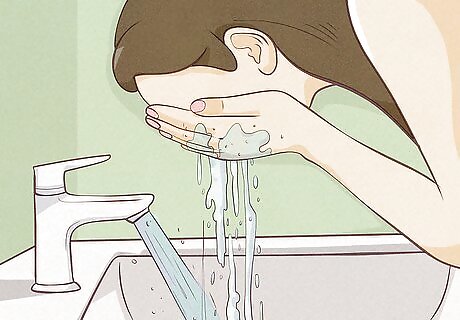
Cleanse your face. Use a gentle face wash to remove any dirt, oil, or makeup that may be on your face. It’s also a good idea to pull your hair back into a ponytail and use an elastic or fabric hair band to secure all the shorter, "baby" hairs off your face. Let the hair of your sideburns remain isolated on the other side of the headband.
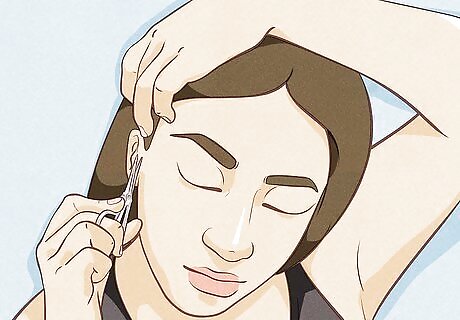
Trim any long sideburn hairs. A good face epilator will remove the peach fuzz, as well as the coarser hair around your temple, but it will be a little easier for you to manage if your hair is short. Use a small pair of scissors to trim your hair to the recommended 0.5 millimeter length.
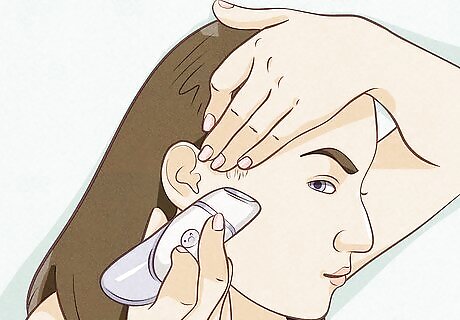
Run the epilator up your sideburn. With the epilator turned on, you want to glide it over your sideburn in the opposite direction of hair growth. Try not to get too close to the hairline, or you may accidentally remove hair beyond the sideburn. Keep in mind that if the line where you removed your sideburn is too severe, it may look unnatural too. Don't push into your skin or move the epilator too fast. Instead, use gentle, upward strokes until you have removed the majority of the hair. Your skin may be a little red and swollen, even into the next day, so it's best not to use the epilator right before a big event. If you're using a clipper, you will also want to go against the grain of your sideburns. A razor might be better than an epilator if your skin is very sensitive, since it has teeth so it doesn't scratch your skin.

Tweeze any stray hairs. The epilator may not remove all of the sideburn hair, especially those close to your hairline. You can use clean tweezers to carefully remove any hairs that bother you. However, you may decide to leave some untouched so you maintain a natural shape. The effects of epilating can last from a few weeks to a month. Don't forget to clean the machine once you're done. Remove the head from your epilator and use a small brush to sweep out the hair. It’s also a good idea to clean the “blades” with alcohol.
Waxing Your Sideburns

Buy a waxing kit specifically for facial hair. The skin on your face is more delicate than the rest of your body, so make sure the box specifically says the kit is safe to use on your face.If you don't want to deal with the messy wax, look for roll-on wax or kits that come with pre-waxed strips. Most home waxing kits are microwavable so you can easily heat them up in your kitchen.

Pull your hair back. The last thing you want is to get wax in the rest of your hair, so make sure it is entirely off your face. Gather it back in a ponytail, and use an elastic or fabric headband to secure all of the hair behind your hairline. Remember to pin back your bangs, too. The only hair that should be free from the headband is the hair you plan to remove. If you don't have a headband, you can use bobby pins or hair clips to secure your hair. You can also use a scarf to secure the rest of your hair and keep it out of the way.
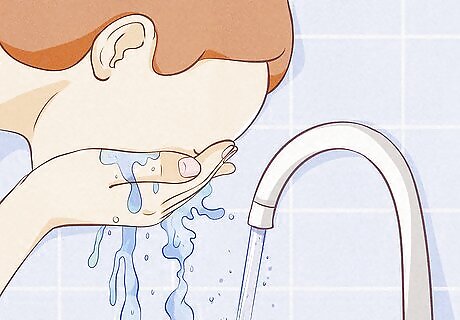
Wash your face. Make sure you have removed all of your makeup, and cleansed your skin of oil, dirt, and other debris. Waxing can leave your skin prone to bacteria, so it’s important that the skin around your sideburns is completely clean. If you have sensitive or oily skin, apply a dusting of talc or baby powder to the area where you will be waxing. Don't wax if you've used a prescription retinoid or over-the-counter retinol in the last 10 days, or the waxing may rip your skin off along with your hair. Wait to wax if your skin is sunburned, peeling, or broken.

Trim long sideburn hair. For the most effective results, your hair must be the right length prior to waxing. Typically, you want it to be 0.25 to 0.5 inches (0.64 to 1.27 cm) long. Use a pair of small scissors to trim your sideburns until all of the hair is the appropriate length. Keep in mind that if there are any hairs shorter than 1/4-inch, the wax likely won't remove them.
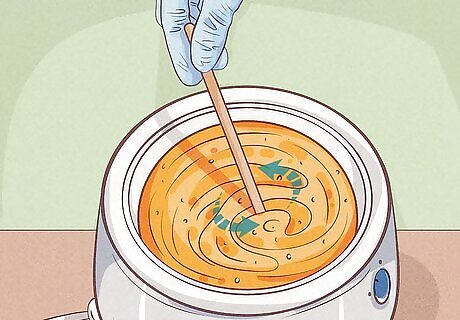
Heat the wax. Make sure to follow the heating directions on the kit carefully. It’s especially important not to overheat the wax because you may burn yourself. You can test a little on the inside of your wrist to make sure the temperature is correct. The skin there is thin and should be a good gauge as to whether or not the wax is too hot to use on your face.

Apply the wax to your sideburn. Most waxing kits come with an applicator that you can use to carefully trace along the hairline. You should apply the wax in the same direction as hair growth. Try to cover the roots of the hair that you want to remove so you can be sure to get rid of all of it. Keep in mind that you can’t wax the same area twice without causing major irritation to your skin. To make it easier for the wax to capture the individual hairs, place your free hand on your cheekbone, and pull your skin taut and away from your temple as you apply.

Place a cloth strip over the wax. Make sure the wax is still warm, and wait approximately 10 seconds. Use your fingers to stroke along the length of the cloth to ensure that it attaches to the wax.
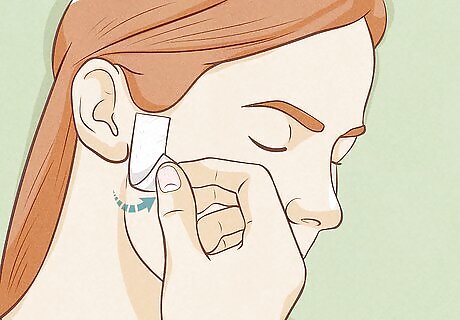
Remove the strip. For the best results, pull your skin taut with 1 hand and use the other hand to rip the cloth diagonally upwards, against the direction of hair growth. If you do not pull the skin tight, you may bruise your face. Pulling against in the opposite direction of growth will keep hairs from breaking during the process.
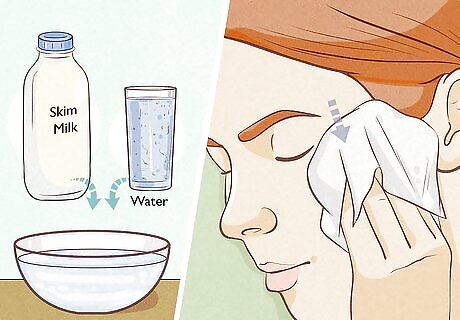
Apply a soothing treatment. The skin around your sideburns will be red and possibly swollen after waxing, so it can help to press a paper towel dampened with a mixture of 1 part skim milk and 1 part cold water for 10 minutes. The lactic acid in the milk will help soothe your skin. You can apply the compress every few hours. Instead of the milk-water mixture, you can also use a hydrating salve, an over-the-counter antibacterial or hydrocortisone cream, or aloe vera gel. Some wax kits also come with their own soothing cream, so you can just use this instead. Make sure to avoid using anything harsh, such as alpha hydroxy acid, retinol, or benzoyl peroxide, for at least a day while your skin recovers. Be sure to apply sunscreen to the area around your sideburns because freshly waxed skin is more sensitive to the sun.
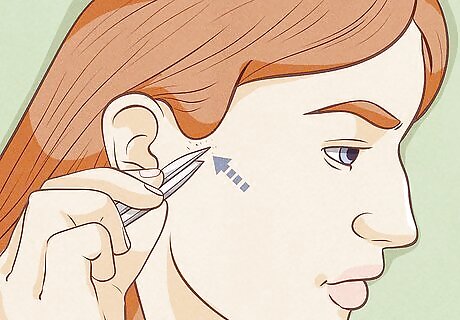
Tweeze any stray hairs. Because you can’t wax the area again, use a pair of clean tweezers to gently remove any hair that has been left behind. If there is still wax left on your skin, a moisturizing product such as baby oil can help clean up the area. You shouldn’t have to wax your sideburns again for 2 to 6 weeks. Some kits come with an erasing oil that helps to get wax out of hair and off of skin without removing the hair.
Using Hair Removal Creams on Your Sideburns
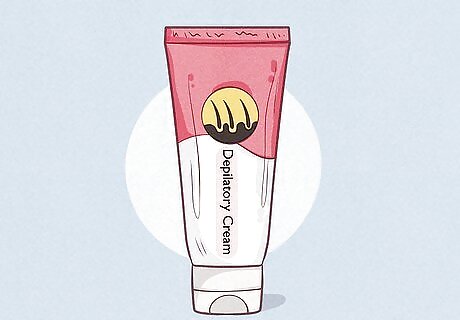
Choose a hair removal (or depilatory) cream. These products use chemicals to dissolve the proteins in your hair, causing the hair to loosen from the follicle. The most important consideration when selecting a cream is your skin's sensitivity. Opt for a formula made specifically for facial hair removal, which contains vitamin E or aloe. Depilatories come in creams, gels, roll-ons, and aerosols. Roll-ons and aerosols make less of a mess, but you can get a nice, thick layer of product with a cream. If you have sensitive skin, talk to a dermatologist about the best hair removal cream options for you.
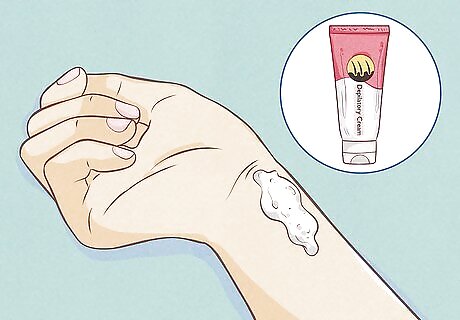
Test the cream on the inside of your wrist. To avoid an allergic reaction, apply a small amount of cream to your skin, wait the prescribed amount of time on the packaging, and then wipe it off. Wait at least 24 hours to make sure you don't have an adverse reaction to the cream -- the chemicals can be harsh, as your skin contains the same proteins the chemicals attack in your hair. Your wrist is a good spot to test the cream because the skin is thin and delicate, just like the skin on your face.
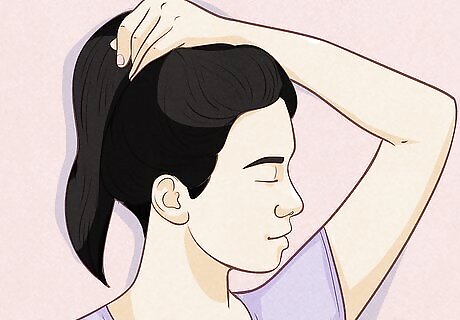
Pull your hair back. A thick, fabric headband makes a good barrier to your hairline so you don't accidentally remove more hair than you mean to. Make sure your sideburns are free and not pulled back with the rest of your hair so you can target them with the cream. Check the area around your sideburns to make sure you don't have an open cut, scrape, burn, or peeling skin. The depilatory may irritate or cause chemical burns on damaged skin. Make sure you have removed all your makeup and your skin is clean before you apply the cream.
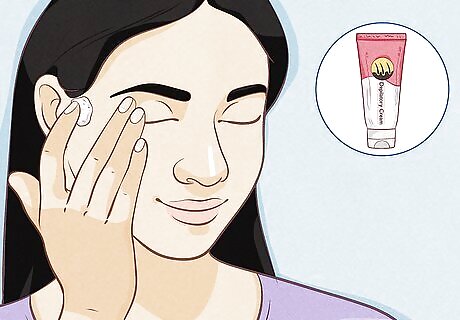
Apply a thick layer of cream to your sideburns. Spread it over the hair in a dabbing motion but do not rub or massage it into your skin. Do both sides of your face at the same time, and wash your hands thoroughly afterwards. The cream may have a strong, almost sulfur-like scent, which is normal. If you’re sensitive to smells, choose a product that’s scent-free.
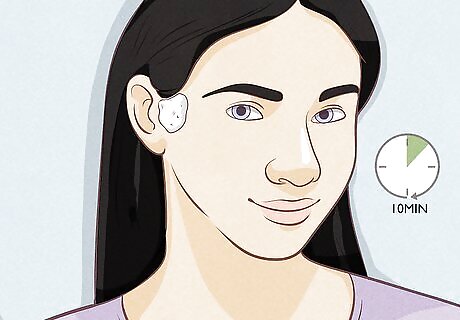
Allow the cream to sit. Read the instructions carefully to see how long you should wait; in most cases, it’s 5 to 10 minutes. Don't go beyond the recommended time, though, or you may get a nasty burn. Many creams recommend checking after 5 minutes to see if the hair is loose enough to come out. A slight tingling sensation is normal, but if the skin begins to burn, immediately remove the cream and wash the area with cool water and a gentle soap.
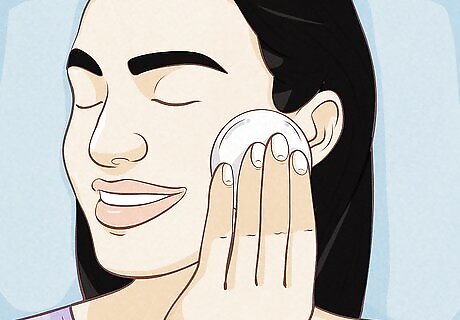
Wipe away the cream. Use a warm, wet cotton pad or washcloth to gently remove it, and the hair should wipe away with it. You may have to make a few passes with the pad or cloth to remove all of the hair. Be sure you remove all traces of the cream so it doesn't continue reacting to with your skin. It should take about a week for the hair to start growing back. In the meantime, your skin should be smooth and free of ingrown hairs. Moisturize your skin afterward. Most kits come with a soothing lotion that you can apply after using the depilatory.
Using Professional Services on Your Sideburns
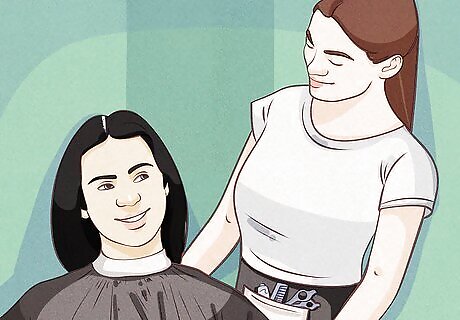
Visit a salon for professional waxing. If you’re nervous about waxing off your sideburns yourself, you may want to go to a salon or spa to have a professional waxer handle the treatment. You want to make sure to the salon you choose is clean and uses licensed cosmetologists as waxers. Ask friend and family for recommendations when you’re looking for a waxing salon. It’s the best way to ensure that a salon is professional and reliable. If you don’t know anyone who gets waxed professionally, look on Yelp to see reviews of salons and spas in your area to help you make your decision.

Consult a doctor about laser hair removal. This procedure uses heat to kill the hair follicle during the first stage of growth. The resulting hair loss is permanent, but because your hair is not all in this first stage of growth at the same time, it may require multiple laser treatments to get rid of your sideburns. In most cases, it takes between 2 and 8 treatments to permanently remove the hair. This procedure only works on people with contrasting hair and skin colors, which means a relatively light-skinned person with dark hair. The follicle won't absorb the heat from the laser if you have dark skin or fair hair. Make sure to do extensive research before choosing a facility for laser hair removal treatment. A laser can cause permanent damage if used incorrectly, so choose a dermatologist or plastic surgeon to perform the procedure, as they have the most training. If a nurse or aesthetician is performing the procedure, make sure a doctor is on-site, overseeing their work. Ask how many machines are on the premises. The more options available, the more likely you will get the most efficient treatment.
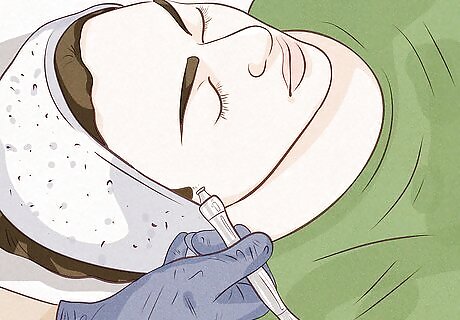
Find a licensed electrologist to remove hair. With electrolysis, a tiny probe is used to kill the hair follicle with a current of electricity. The hair is then tweezed and usually does not grow back. As with lasering, the hair must be at a certain stage of growth for this to work, so multiple visits are necessary. In some cases, it may take up to 20 treatments. Electrolysis will work on any hair color or skin color. It is very important to find an experienced and reputable specialist to perform your electrolysis. Poor work can result in infection, scarring, and discoloration of the skin. Electrolysis, when performed properly, has proven to be a safe and permanent solution for hair removal.













Comments
0 comment